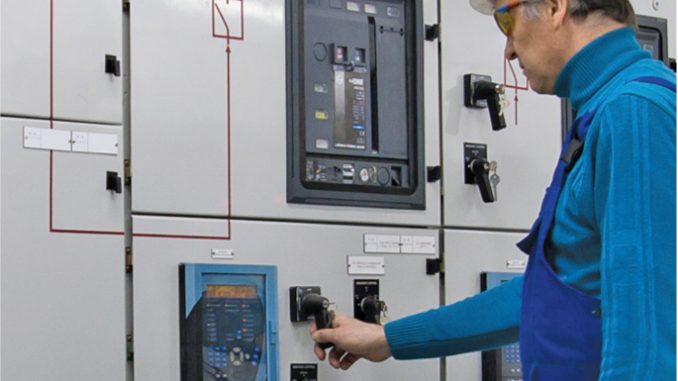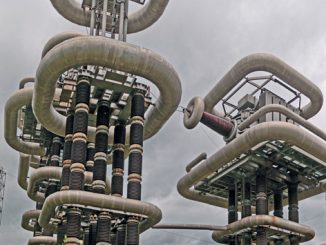
There has been a growing focus on the development of the ultra high voltage (UHV) transmission network in the country. A UHV network comprising voltages of 1,000 kV or above in alternating current (AC) and 800 kV or above in direct current (DC) offers an ideal solution for meeting the country’s power requirement. A UHV network allows long distance power transmission at minimum network loss and high efficiency. Besides, it maintains operational efficiency during voltage fluctuations occurring due to variations in generation and load demand, allows multi-directional power flows through the large-scale integration of renewable energy sources, and transmits a higher quantum of power through the same corridor, thereby minimising the right-of-way requirement.
Switchgear is a critical component of the equipment supply chain in the high voltage (HV) segment. So far, growth in the switchgear industry has been driven by a strong demand for low and medium voltage switchgear from distribution and sub-transmission networks. However, in the coming years, the demand for HV and UHV switchgear is expected to drive the growth of the industry, given the government’s thrust on developing a high voltage transmission network.
UHV network in India
The UHV transmission network in the country currently aggregates 6,082 ckt. km. The first ±800 kV HVDC line in the country, ± the 800 kV HVDC Biswanath Chariali-Agra bipole line, was commissioned by Power Grid Corporation of India Limited (Powergrid) in September 2015. It is the world’s longest multi-terminal HVDC line with a length of 3,506 ckt. km and a power transfer capacity of 6,000 MW. The transmission superhighway connects the north-eastern region, which is rich in hydropower generation, with the other regions.
Another UHV transmission system in operation is the 1,500 MW Pole I of the ±800kV HVDC Champa-Kurukshetra transmission system, which is a part of the ±800 kV, 3,000 MW Western region-Northern region HVDC interconnector transmission system for independent power projects (IPPs) in Chhattisgarh. Developed by Powergrid, Pole I of the project comprises terminals at Champa amd Kurukshetra along with the 2,576 ckt. km Champa-Kurukshetra HVDC line, and entails a total cost of Rs 63 billion. Meanwhile, the 1,500 MW Pole II is expected to be commissioned soon. Furthermore, the transmission system is being upgraded to 6,000 MW with the addition of the second HVDC bipole of 3,000 MW, ±800 kV HVDC terminals. It will entail an expenditure of about Rs 52 billion and is expected to be completed by December 2018. The project would enable the transfer of power from the upcoming IPP in Chhattisgarh to demand centres in the northern region.
A notable development in the UHV transmission segment has been the commissioning of Powergrid’s 1,200 kV UHVAC National Test Station (along with 1,200 kV single and DC transmission line sections, and associated 1,200 kV bays) at Bina in Madhya Pradesh in October 2016. Developed by ABB Limited, it is the first hybrid gas-insulated switchgear in the world to be energised at this voltage level. Besides, in order to facilitate the development of the UHVAC network, Powergrid, along with 35 manufacturers, has been working towards developing the technology indigenously since 2012. With regard to upcoming projects in the HV transmission segment, Powergrid is developing the ±800 kV Raigarh-Pugalur HVDC bipole link. The Rs 147 billion 3,676 ckt. km two-way link will be the country’s first green energy corridor project. A turnkey contract worth $840 million for the project has been awarded to a consortium of ABB India Limited and Bharat Heavy Electricals Limited. The project is expected to be completed by 2019.
Issues and challenges
One of the key challenges in the development of the UHV transmission system is the high cost of the technology. As per industry estimates, the cost of a 1,500 kV line is 3.5 times more than that of a 765 kV line. However, the power transfer capacity is also 4.2 times higher than that of a 765 kV line. Further, there is a lack of testing facilities for UHV equipment in the country. Undertaking equipment testing overseas adds to the project cost and timeline. Besides, the shortage of skilled manpower, lack of standardisation in technical specifications, delays in the bidding process, one-sided contract terms and delays in inspection also pose challenges in the development of the technology.
In sum, the demand for switchgear for HV applications is expected to grow as the country gears up for developing an UHV power transmission system. Power transmission at HV levels is essential for sustaining a robust transmission network as it addresses the challenges associated with the growing power demand and integration of renewable energy.



